#artificial neural network in machine learning
Explore tagged Tumblr posts
Text
Behind the Code: How AI Is Quietly Reshaping Software Development and the Top Risks You Must Know
AI Software Development

In 2025, artificial intelligence (AI) is no longer just a buzzword; it has become a driving force behind the scenes, transforming software development. From AI-powered code generation to advanced testing tools, machine learning (ML) and deep learning (DL) are significantly influencing how developers build, test, and deploy applications. While these innovations offer speed, accuracy, and automation, they also introduce subtle yet critical risks that businesses and developers must not overlook. This blog examines how AI is transforming the software development lifecycle and identifies the key risks associated with this evolution.
The Rise of AI in Software Development
Artificial intelligence, machine learning, and deep learning are becoming foundational to modern software engineering. AI tools like ChatGPT, Copilot, and various open AI platforms assist in code suggestions, bug detection, documentation generation, and even architectural decisions. These tools not only reduce development time but also enable less-experienced developers to produce quality code.
Examples of AI in Development:
- AI Chat Bots: Provide 24/7 customer support and collect feedback.
- AI-Powered Code Review: Analyze code for bugs, security flaws, and performance issues.
- Natural Language Processing (NLP): Translate user stories into code or test cases.
- AI for DevOps: Use predictive analytics for server load and automate CI/CD pipelines.
With AI chat platforms, free AI chatbots, and robotic process automation (RPA), the lines between human and machine collaboration are increasingly blurred.
The Hidden Risks of AI in Application Development

While AI offers numerous benefits, it also introduces potential vulnerabilities and unintended consequences. Here are the top risks associated with integrating AI into the development pipeline:
1. Over-Reliance on AI Tools
Over-reliance on AI tools may reduce developer skills and code quality:
- A decline in critical thinking and analytical skills.
- Propagation of inefficient or insecure code patterns.
- Reduced understanding of the software being developed.
2. Bias in Machine Learning Models
AI and ML trained on biased or incomplete data can produce skewed results:
-Applications may produce discriminatory or inaccurate results.
-Risks include brand damage and legal issues in regulated sectors like retail or finance.
3. Security Vulnerabilities
AI-generated code may introduce hidden bugs or create opportunities for exploitation:
-Many AI tools scrape open-source data, which might include insecure or outdated libraries.
-Hackers could manipulate AI-generated models for malicious purposes.
4. Data Privacy and Compliance Issues
AI models often need large datasets with sensitive information:
-Misuse or leakage of data can lead to compliance violations (e.g., GDPR).
-Using tools like Google AI Chat or OpenAI Chatbots can raise data storage concerns.
5. Transparency and Explainability Challenges
Understanding AI, especially deep learning decisions, is challenging:
-A lack of explainability complicates debugging processes.
-There are regulatory issues in industries that require audit trails (e.g., insurance, healthcare).
AI and Its Influence Across Development Phases
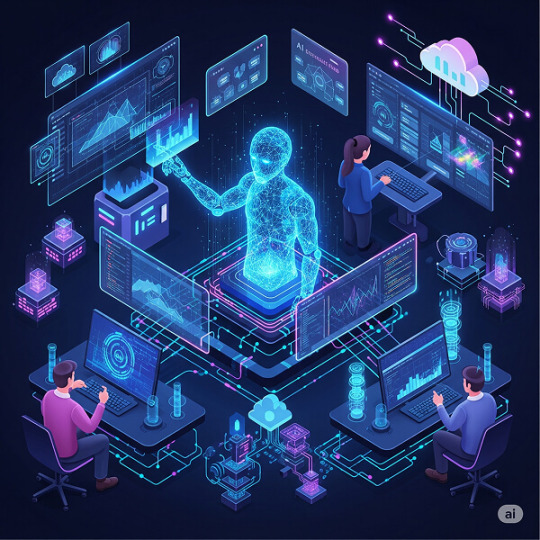
Planning & Design: AI platforms analyze historical data to forecast project timelines and resource allocation.
Risks: False assumptions from inaccurate historical data can mislead project planning.
Coding: AI-powered IDEs and assistants suggest code snippets, auto-complete functions, and generate boilerplate code.
Risks: AI chatbots may overlook edge cases or scalability concerns.
Testing: Automated test case generation using AI ensures broader coverage in less time.
Risks: AI might miss human-centric use cases and unique behavioral scenarios.
Deployment & Maintenance: AI helps predict failures and automates software patching using computer vision and ML.
Risks:False positives or missed anomalies in logs could lead to outages.
The Role of AI in Retail, RPA, and Computer Vision

Industries such as retail and manufacturing are increasingly integrating AI.��
In Retail: AI is used for chatbots, customer data analytics, and inventory management tools, enhancing personalized shopping experiences through machine learning and deep learning.
Risk: Over-personalization and surveillance-like tracking raise ethical concerns.
In RPA: Robotic Process Automation tools simplify repetitive back-end tasks. AI adds decision-making capabilities to RPA.
Risk: Errors in automation can lead to large-scale operational failures.
In Computer Vision: AI is applied in image classification, facial recognition, and quality control.
Risk: Misclassification or identity-related issues could lead to regulatory scrutiny.
Navigating the Risks: Best Practices
To safely harness the power of AI in development, businesses should adopt strategic measures, such as establishing AI ethics policies and defining acceptable use guidelines.
By understanding the transformative power of AI and proactively addressing its risks, organizations can better position themselves for a successful future in software development. Key Recommendations:
Audit and regularly update AI datasets to avoid bias.
Use explainable AI models where possible.
Train developers on AI tools while reinforcing core engineering skills.
Ensure AI integrations comply with data protection and security standards.
Final Thoughts: Embracing AI While Staying Secure
AI, ML, and DL have revolutionized software development, enabling automation, accuracy, and innovation. However, they bring complex risks that require careful management. Organizations must adopt a balanced approach—leveraging the strengths of AI platforms like GPT chat AI, open chat AI, and RPA tools while maintaining strict oversight.
As we move forward, embracing AI in a responsible and informed manner is critical. From enterprise AI adoption to computer vision applications, businesses that align technological growth with ethical and secure practices will lead the future of development.
#artificial intelligence chat#ai and software development#free ai chat bot#machine learning deep learning artificial intelligence#rpa#ai talking#artificial intelligence machine learning and deep learning#artificial intelligence deep learning#ai chat gpt#chat ai online#best ai chat#ai ml dl#ai chat online#ai chat bot online#machine learning and deep learning#deep learning institute nvidia#open chat ai#google chat bot#chat bot gpt#artificial neural network in machine learning#openai chat bot#google ai chat#ai deep learning#artificial neural network machine learning#ai gpt chat#chat ai free#ai chat online free#ai and deep learning#software development#gpt chat ai
0 notes
Text
#activation function in neural network#artificial neural network in machine learning#neural network in machine learning#neural networks and deep learning#activation function
1 note
·
View note
Text

Frank Rosenblatt, often cited as the Father of Machine Learning, photographed in 1960 alongside his most-notable invention: the Mark I Perceptron machine — a hardware implementation for the perceptron algorithm, the earliest example of an artificial neural network, est. 1943.
#frank rosenblatt#tech history#machine learning#neural network#artificial intelligence#AI#perceptron#60s#black and white#monochrome#technology#u
820 notes
·
View notes
Text

[image ID: Bluesky post from user marawilson that reads
“Anyway, Al has already stolen friends' work, and is going to put other people out of work. I do not think a political party that claims to be the party of workers in this country should be using it. Even for just a silly joke.”
beneath a quote post by user emeraldjaguar that reads
“Daily reminder that the underlying purpose of Al is to allow wealth to access skill while removing from the skilled the ability to access wealth.” /end ID]
#ai#artificial intelligence#machine learning#neural network#large language model#chat gpt#chatgpt#scout.txt#but obvs not OP
22 notes
·
View notes
Text

Neturbiz Enterprises - AI Innov7ions
Our mission is to provide details about AI-powered platforms across different technologies, each of which offer unique set of features. The AI industry encompasses a broad range of technologies designed to simulate human intelligence. These include machine learning, natural language processing, robotics, computer vision, and more. Companies and research institutions are continuously advancing AI capabilities, from creating sophisticated algorithms to developing powerful hardware. The AI industry, characterized by the development and deployment of artificial intelligence technologies, has a profound impact on our daily lives, reshaping various aspects of how we live, work, and interact.
#ai technology#Technology Revolution#Machine Learning#Content Generation#Complex Algorithms#Neural Networks#Human Creativity#Original Content#Healthcare#Finance#Entertainment#Medical Image Analysis#Drug Discovery#Ethical Concerns#Data Privacy#Artificial Intelligence#GANs#AudioGeneration#Creativity#Problem Solving#ai#autonomous#deepbrain#fliki#krater#podcast#stealthgpt#riverside#restream#murf
17 notes
·
View notes
Text

Tonight I am hunting down venomous and nonvenomous snake pictures that are under the creative commons of specific breeds in order to create one of the most advanced, in depth datasets of different venomous and nonvenomous snakes as well as a test set that will include snakes from both sides of all species. I love snakes a lot and really, all reptiles. It is definitely tedious work, as I have to make sure each picture is cleared before I can use it (ethically), but I am making a lot of progress! I have species such as the King Cobra, Inland Taipan, and Eyelash Pit Viper among just a few! Wikimedia Commons has been a huge help!
I'm super excited.
Hope your nights are going good. I am still not feeling good but jamming + virtual snake hunting is keeping me busy!
#programming#data science#data scientist#data analysis#neural networks#image processing#artificial intelligence#machine learning#snakes#snake#reptiles#reptile#herpetology#animals#biology#science#programming project#dataset#kaggle#coding
43 notes
·
View notes
Text

#coincidence? i think not#my little pony#mlp#twilight sparkle#my little pony fim#my little pony friendship is magic#friendship is magic#machine learning#ml#i am talking#artificial intelligence#neural networks#multilayer perceptron#weirdcore#weird#fav fav fav#me me me
5 notes
·
View notes
Text
The Human Brain vs. Supercomputers: The Ultimate Comparison
Are Supercomputers Smarter Than the Human Brain?
This article delves into the intricacies of this comparison, examining the capabilities, strengths, and limitations of both the human brain and supercomputers.

#human brain#science#nature#health and wellness#skill#career#health#supercomputer#artificial intelligence#ai#cognitive abilities#human mind#machine learning#neural network#consciousness#creativity#problem solving#pattern recognition#learning techniques#efficiency#mindset#mind control#mind body connection#brain power#brain training#brain health#brainhealth#brainpower
5 notes
·
View notes
Text
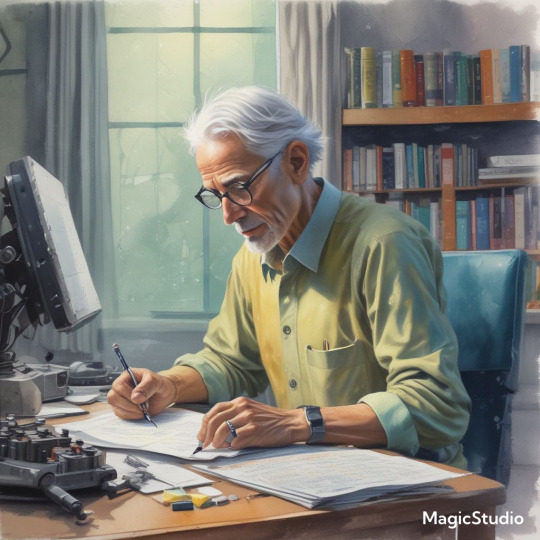
The Mathematical Foundations of Machine Learning
In the world of artificial intelligence, machine learning is a crucial component that enables computers to learn from data and improve their performance over time. However, the math behind machine learning is often shrouded in mystery, even for those who work with it every day. Anil Ananthaswami, author of the book "Why Machines Learn," sheds light on the elegant mathematics that underlies modern AI, and his journey is a fascinating one.
Ananthaswami's interest in machine learning began when he started writing about it as a science journalist. His software engineering background sparked a desire to understand the technology from the ground up, leading him to teach himself coding and build simple machine learning systems. This exploration eventually led him to appreciate the mathematical principles that underlie modern AI. As Ananthaswami notes, "I was amazed by the beauty and elegance of the math behind machine learning."
Ananthaswami highlights the elegance of machine learning mathematics, which goes beyond the commonly known subfields of calculus, linear algebra, probability, and statistics. He points to specific theorems and proofs, such as the 1959 proof related to artificial neural networks, as examples of the beauty and elegance of machine learning mathematics. For instance, the concept of gradient descent, a fundamental algorithm used in machine learning, is a powerful example of how math can be used to optimize model parameters.
Ananthaswami emphasizes the need for a broader understanding of machine learning among non-experts, including science communicators, journalists, policymakers, and users of the technology. He believes that only when we understand the math behind machine learning can we critically evaluate its capabilities and limitations. This is crucial in today's world, where AI is increasingly being used in various applications, from healthcare to finance.
A deeper understanding of machine learning mathematics has significant implications for society. It can help us to evaluate AI systems more effectively, develop more transparent and explainable AI systems, and address AI bias and ensure fairness in decision-making. As Ananthaswami notes, "The math behind machine learning is not just a tool, but a way of thinking that can help us create more intelligent and more human-like machines."
The Elegant Math Behind Machine Learning (Machine Learning Street Talk, November 2024)
youtube
Matrices are used to organize and process complex data, such as images, text, and user interactions, making them a cornerstone in applications like Deep Learning (e.g., neural networks), Computer Vision (e.g., image recognition), Natural Language Processing (e.g., language translation), and Recommendation Systems (e.g., personalized suggestions). To leverage matrices effectively, AI relies on key mathematical concepts like Matrix Factorization (for dimension reduction), Eigendecomposition (for stability analysis), Orthogonality (for efficient transformations), and Sparse Matrices (for optimized computation).
The Applications of Matrices - What I wish my teachers told me way earlier (Zach Star, October 2019)
youtube
Transformers are a type of neural network architecture introduced in 2017 by Vaswani et al. in the paper “Attention Is All You Need”. They revolutionized the field of NLP by outperforming traditional recurrent neural network (RNN) and convolutional neural network (CNN) architectures in sequence-to-sequence tasks. The primary innovation of transformers is the self-attention mechanism, which allows the model to weigh the importance of different words in the input data irrespective of their positions in the sentence. This is particularly useful for capturing long-range dependencies in text, which was a challenge for RNNs due to vanishing gradients. Transformers have become the standard for machine translation tasks, offering state-of-the-art results in translating between languages. They are used for both abstractive and extractive summarization, generating concise summaries of long documents. Transformers help in understanding the context of questions and identifying relevant answers from a given text. By analyzing the context and nuances of language, transformers can accurately determine the sentiment behind text. While initially designed for sequential data, variants of transformers (e.g., Vision Transformers, ViT) have been successfully applied to image recognition tasks, treating images as sequences of patches. Transformers are used to improve the accuracy of speech-to-text systems by better modeling the sequential nature of audio data. The self-attention mechanism can be beneficial for understanding patterns in time series data, leading to more accurate forecasts.
Attention is all you need (Umar Hamil, May 2023)
youtube
Geometric deep learning is a subfield of deep learning that focuses on the study of geometric structures and their representation in data. This field has gained significant attention in recent years.
Michael Bronstein: Geometric Deep Learning (MLSS Kraków, December 2023)
youtube
Traditional Geometric Deep Learning, while powerful, often relies on the assumption of smooth geometric structures. However, real-world data frequently resides in non-manifold spaces where such assumptions are violated. Topology, with its focus on the preservation of proximity and connectivity, offers a more robust framework for analyzing these complex spaces. The inherent robustness of topological properties against noise further solidifies the rationale for integrating topology into deep learning paradigms.
Cristian Bodnar: Topological Message Passing (Michael Bronstein, August 2022)
youtube
Sunday, November 3, 2024
#machine learning#artificial intelligence#mathematics#computer science#deep learning#neural networks#algorithms#data science#statistics#programming#interview#ai assisted writing#machine art#Youtube#lecture
4 notes
·
View notes
Text
youtube
Discover how to build a CNN model for skin melanoma classification using over 20,000 images of skin lesions
We'll begin by diving into data preparation, where we will organize, clean, and prepare the data form the classification model.
Next, we will walk you through the process of build and train convolutional neural network (CNN) model. We'll explain how to build the layers, and optimize the model.
Finally, we will test the model on a new fresh image and challenge our model.
Check out our tutorial here : https://youtu.be/RDgDVdLrmcs
Enjoy
Eran
#Python #Cnn #TensorFlow #deeplearning #neuralnetworks #imageclassification #convolutionalneuralnetworks #SkinMelanoma #melonomaclassification
#artificial intelligence#convolutional neural network#deep learning#python#tensorflow#machine learning#Youtube
3 notes
·
View notes
Text
Applied AI - Integrating AI With a Roomba
AKA. What have I been doing for the past month and a half
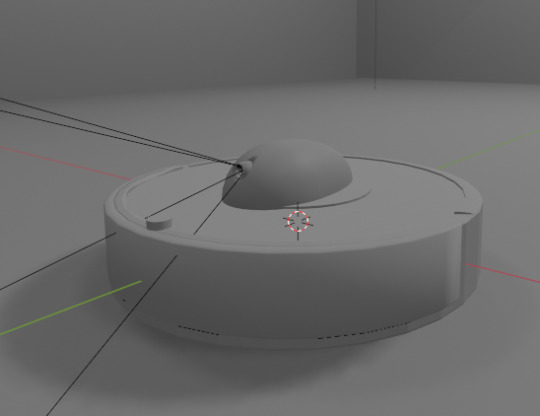
Everyone loves Roombas. Cats. People. Cat-people. There have been a number of Roomba hacks posted online over the years, but an often overlooked point is how very easy it is to use Roombas for cheap applied robotics projects.
Continuing on from a project done for academic purposes, today's showcase is a work in progress for a real-world application of Speech-to-text, actionable, transformer based AI models. MARVINA (Multimodal Artificial Robotics Verification Intelligence Network Application) is being applied, in this case, to this Roomba, modified with a Raspberry Pi 3B, a 1080p camera, and a combined mic and speaker system.

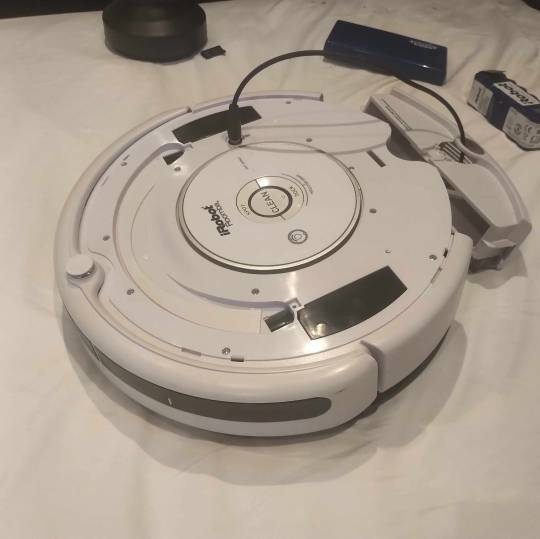
The hardware specifics have been a fun challenge over the past couple of months, especially relating to the construction of the 3D mounts for the camera and audio input/output system.
Roomba models are particularly well suited to tinkering - the serial connector allows the interface of external hardware - with iRobot (the provider company) having a full manual for commands that can be sent to the Roomba itself. It can even play entire songs! (Highly recommend)
Scope:
Current:
The aim of this project is to, initially, replicate the verbal command system which powers the current virtual environment based system.
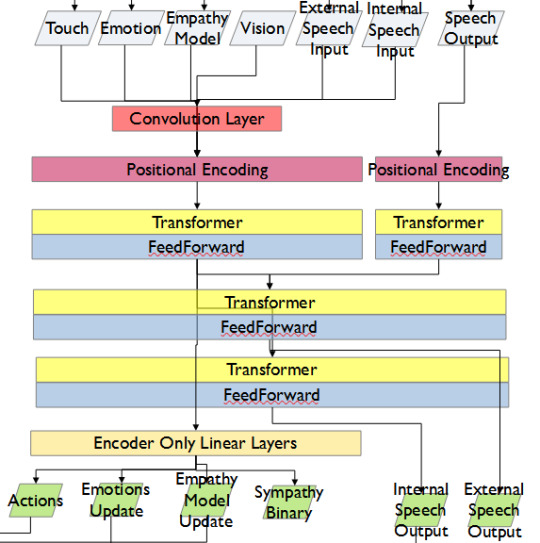
This has been achieved with the custom MARVINA AI system, which is interfaced with both the Pocket Sphinx Speech-To-Text (SpeechRecognition · PyPI) and Piper-TTS Text-To-Speech (GitHub - rhasspy/piper: A fast, local neural text to speech system) AI systems. This gives the AI the ability to do one of 8 commands, give verbal output, and use a limited-training version of the emotional-empathy system.
This has mostly been achieved. Now that I know it's functional I can now justify spending money on a better microphone/speaker system so I don't have to shout at the poor thing!
The latency time for the Raspberry PI 3B for each output is a very spritely 75ms! This allows for plenty of time between the current AI input "framerate" of 500ms.
Future - Software:
Subsequent testing will imbue the Roomba with a greater sense of abstracted "emotion" - the AI having a ground set of emotional state variables which decide how it, and the interacting person, are "feeling" at any given point in time.
This, ideally, is to give the AI system a sense of motivation. The AI is essentially being given separate drives for social connection, curiosity and other emotional states. The programming will be designed to optimise for those, while the emotional model will regulate this on a seperate, biologically based, system of under and over stimulation.
In other words, a motivational system that incentivises only up to a point.
The current system does have a system implemented, but this only has very limited testing data. One of the key parts of this project's success will be to generatively create a training data set which will allow for high-quality interactions.

The future of MARVINA-R will be relating to expanding the abstracted equivalent of "Theory-of-Mind". - In other words, having MARVINA-R "imagine" a future which could exist in order to consider it's choices, and what actions it wishes to take.
This system is based, in part, upon the Dyna-lang model created by Lin et al. 2023 at UC Berkley ([2308.01399] Learning to Model the World with Language (arxiv.org)) but with a key difference - MARVINA-R will be running with two neural networks - one based on short-term memory and the second based on long-term memory. Decisions will be made based on which is most appropriate, and on how similar the current input data is to the generated world-model of each model.
Once at rest, MARVINA-R will effectively "sleep", essentially keeping the most important memories, and consolidating them into the long-term network if they lead to better outcomes.
This will allow the system to be tailored beyond its current limitations - where it can be designed to be motivated by multiple emotional "pulls" for its attention.
This does, however, also increase the number of AI outputs required per action (by a magnitude of about 10 to 100) so this will need to be carefully considered in terms of the software and hardware requirements.
Results So Far:
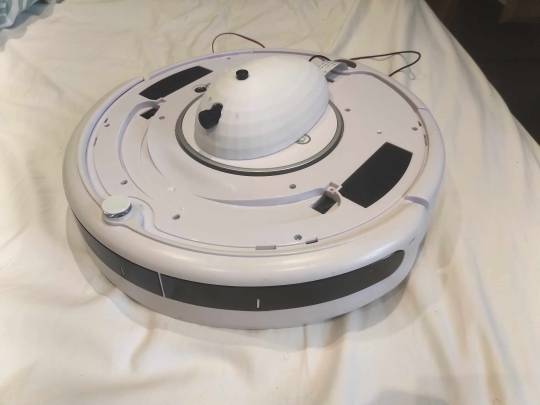
Here is the current prototyping setup for MARVINA-R. As of a couple of weeks ago, I was able to run the entire RaspberryPi and applied hardware setup and successfully interface with the robot with the components disconnected.
I'll upload a video of the final stage of initial testing in the near future - it's great fun!
The main issues really do come down to hardware limitations. The microphone is a cheap ~$6 thing from Amazon and requires you to shout at the poor robot to get it to do anything! The second limitation currently comes from outputting the text-to-speech, which does have a time lag from speaking to output of around 4 seconds. Not terrible, but also can be improved.
To my mind, the proof of concept has been created - this is possible. Now I can justify further time, and investment, for better parts and for more software engineering!
#robot#robotics#roomba#roomba hack#ai#artificial intelligence#machine learning#applied hardware#ai research#ai development#cybernetics#neural networks#neural network#raspberry pi#open source
8 notes
·
View notes
Text
The Ai Peel
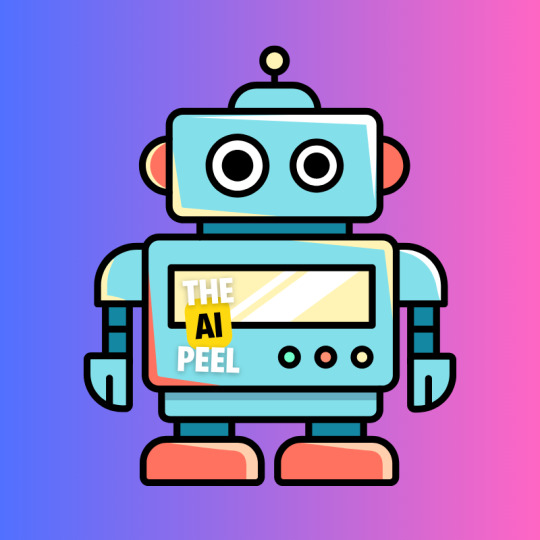
Welcome to The Ai Peel!
Dive into the fascinating world of artificial intelligence with us. At The Ai Peel, we unravel the layers of AI to bring you insightful content, from beginner-friendly explanations to advanced concepts. Whether you're a tech enthusiast, a student, or a professional, our channel offers something for everyone interested in the rapidly evolving field of AI. What You Can Expect: AI Basics: Simplified explanations of fundamental AI concepts. Tutorials: Step-by-step guides on popular AI tools and techniques. Latest Trends: Stay updated with the newest advancements and research in AI. In-depth Analyses: Explore detailed discussions on complex AI topics. Real-World Applications: See how AI is transforming industries and everyday life. Join our community of AI enthusiasts and embark on a journey to peel back the layers of artificial intelligence.
Don't forget to subscribe and hit the notification bell so you never miss an update!
#Artificial Intelligence#Machine Learning#AI Tutorials#Deep Learning#AI Basics#AI Trends#AI Applications#Neural Networks#AI Technology#AI Research
3 notes
·
View notes
Text
As students increasingly rely on AI to complete assignments, the line between learning and automation is blurring. From neural networks to large language models, not all “AI” is the same—and understanding the difference is crucial. Without AI literacy, we risk raising a generation fluent in using tools they don’t truly understand.
#artificial intelligence#chatgpt#computer#llm#machine learning#neural network#priyafied#reality#science#students
0 notes
Text
The Neuro-Linguistic Architectures of Tacit Knowledge Emergence in Large Language Models: A Comparative Analysis with Human Cognition and Buddhist Epistemology
Whatever side you are on, we are witnessing a burgeoning of artificial intelligence, particularly in the advancements in Large Language Models (LLMs), which compels a re-evaluation of fundamental epistemological questions concerning knowledge acquisition, especially the elusive domain of tacit knowledge. Photo by Google DeepMind on Pexels.com This short post will delve into the neuro-linguistic…

View On WordPress
#AI#amygdala#Anumāna#apramāṇa#Artificial Intelligence#basal ganglia#Buddhist Epistemology#buddhist wisdom#cognitive science#consciousness#Deep Learning#Digital Humanities#embodied cognition#epistemology#Future of AI#hippocampus#Human Cognition#linguistics#LLMs#Machine Learning#natural language processing#Neural Networks#Neuroscience#NLP#Philosophy of AI#prajñā#pramāṇa#Pratyakṣa#prefrontal cortex#Raffaello Palandri
0 notes
Text
Beats, Bytes & The Future Sound: AI Meets Electronic Music
Electronic music has always been about pushing boundaries, breaking rules, and bending sound into new dimensions. Now, artificial intelligence is stepping into the booth, reshaping how beats are built, melodies emerge, and tracks come to life. This isn’t about robots replacing producers—it’s about a new creative partnership, where human intuition meets machine-driven possibilities.The Evolution…
#AI and sound design#AI beat generation#AI for producers#AI in electronic music#AI in music production#AI mixing and mastering#AI music algorithms#AI music collaboration#AI music creation#AI music technology#AI music trends.#AI rhythm generation#AI-driven sound synthesis#AI-generated beats#AI-powered music software#artificial intelligence in techno#artificial intelligence music production#automated music production#creative AI music#digital music production#electronic music and AI#electronic music tools#future of music production#machine learning music#music composition AI#music innovation AI#music production AI tools#music production tools#neural networks in music#sound design AI
0 notes
Text
AI Guesses Solutions. We Compute Them.
First of all, let’s clarify what Artificial Intuition can do: Identify faults, anomalies or malfunctions in all sorts of systems, providing early warnings. Pinpoint concentrations of fragility and vulnerability. Basically this means indicating where things can break. Find key variables in complex systems to help prioritise in case of trouble, or when optimising and re-designing for certain…
#advanced analytics#anomaly detection#Artificial Intelligence#Artificial Intuition#Complexity#fault detection#LLM#Machine Learning#Neural Networks#Systemic monitoring
0 notes